I realise there is a 5-page discussion of this course on GCA, but I have written this account before reading that discussion. I do not want it to influence my observations.
I was lucky enough to be a guest at the Hawtree Centenary Celebrations held at the company’s latest creation, Trump International Golf Links, a few miles north of Aberdeen on Scotland’s East Coast. Brian Morgan’s excellent photographs on the course website had given me an idea of the grandeur of the course, but even in drizzle and poor light the reality was even more impressive.
Donald Trump was present and he spoke to us wittily at lunchtime. Martin Hawtree also spoke. His understated, slightly patrician tones contrasted hugely with Trump’s outgoing style, and I am sure it would have been wonderful to have been a fly on the wall each time the two met to discuss the project and the course.
There was much opposition to the building of this course, not least from environmentalists, but Hawtree’s team took great pains to protect every element of the dune system in routing and subsequently constructing the course. Given the enormity of the dunes several holes must have suggested themselves immediately, but the routing has been very cleverly arranged in order to bring about huge variety in the nature and styles of holes – there are no two holes alike – utilising the natural features brilliantly.
A single round played in a Texas scramble is hardly going to reveal many of the subtleties of the course, but I was immediately impressed with the degree of detail incorporated into the design, all the little swales and hummocks, especially around the greens, and the complex slopes and borrows of the extensive putting surfaces. Although I could hardly photograph every detail while keeping pace in a match I noticed so many subtle touches here and there that you could write a book about the course and it would not be a short book!
There are at least six tees on each hole, giving a course that can range from 5215 yards to 7428 yards. For us they had set up a course using a variety of tees mainly from the Blue and Gold courses, giving us a course of perhaps 6,800 yards. There was not much wind, although it was a significant factor on those holes which enjoy highly elevated tees. Martin suggested that we might be surprised at the generous width of the fairways and even I have to say that I felt less intimidated on many of the tees than I had expected to be. However some of the carries were serious!
Given yardages are from the shortest and longest men’s tees.
1. 478-541 yards par 5.

Straightness is compulsory here, although there is more room than you might imagine on the right. We played the hole at 491 yards and our longest hitter (around 300 yards) found himself driving to a very narrow part of the fairway, which he would not have done from either of the longer tees.
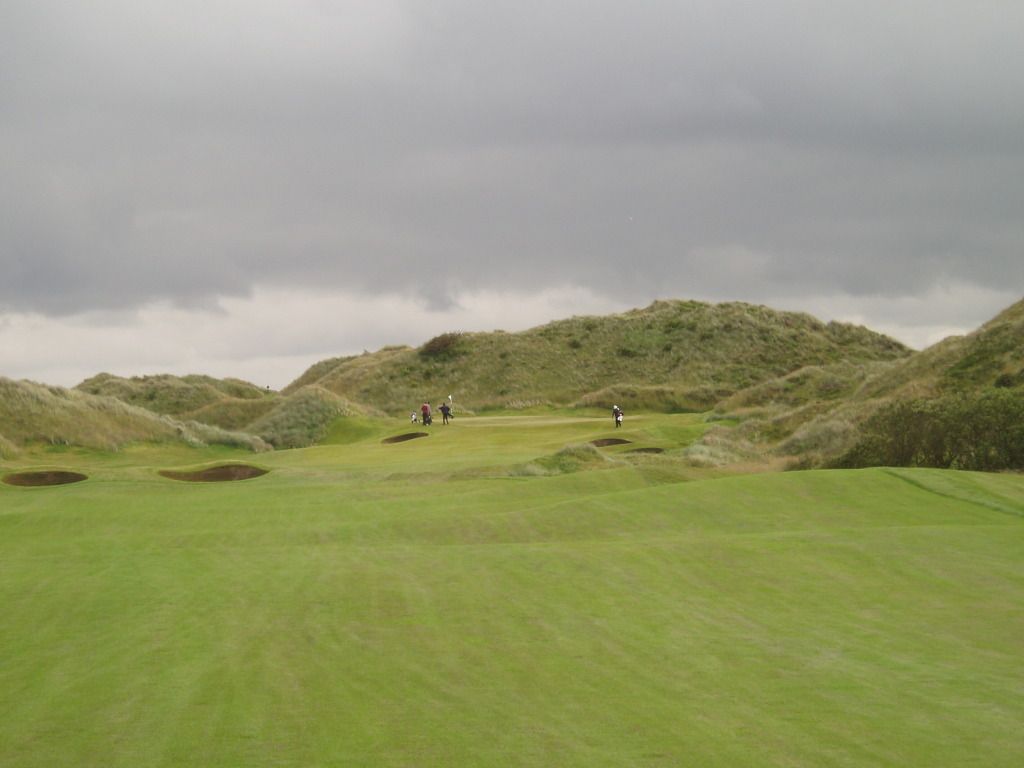
Over the latter stages the fairway undulates before climbing to a raised green.
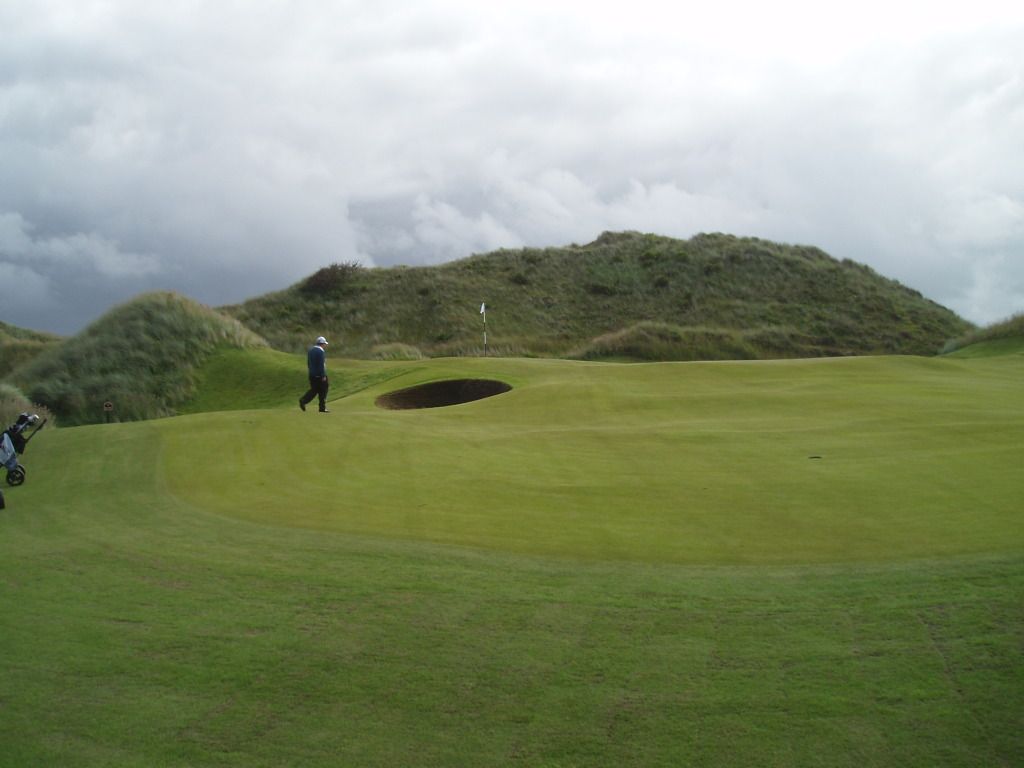
Get out of position and recovery needs a deft touch.
2. 381-443 yards par 4.

The tees all around the course are set in native vegetation, rendering them invisible if you look back from the fairway. Paths are grass, too, so that walking is pleasantly noise free. As can be seen the native vegetation has been spared the mower! This is a pleasant driving hole on which longer hitters have an opportunity to demonstrate their prowess by driving clear of Menie Burn which crosses the fairway.

The said Menie Burn and, in the distance a flagstick cunningly protected.
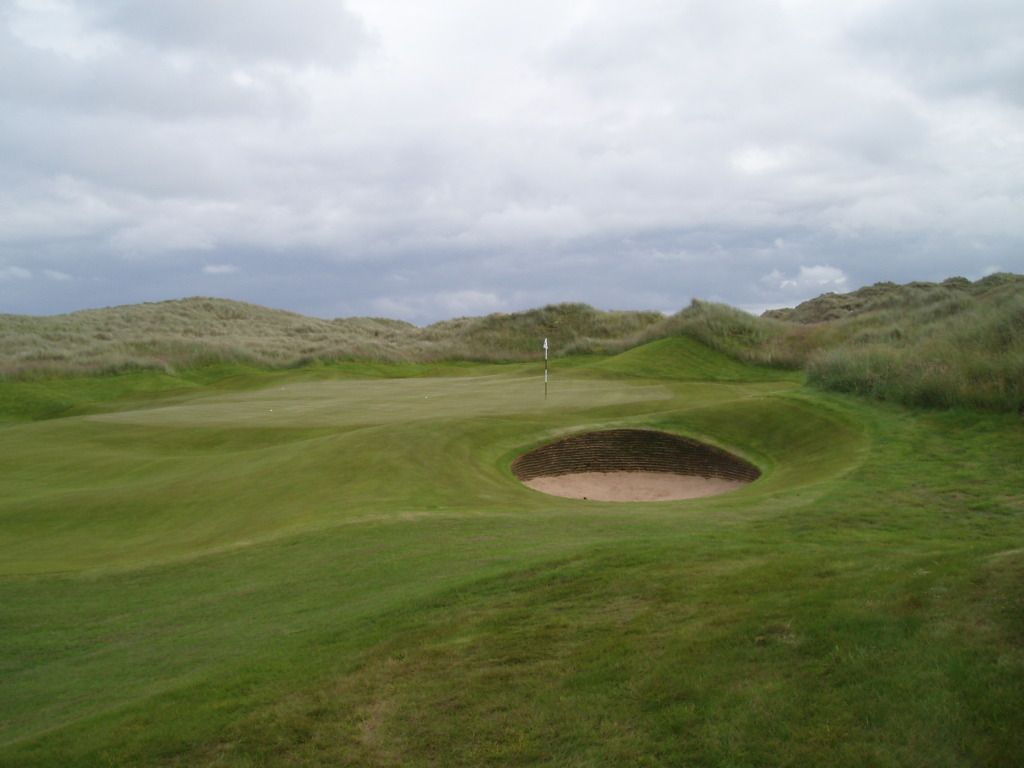
One well-placed bunker does the trick….
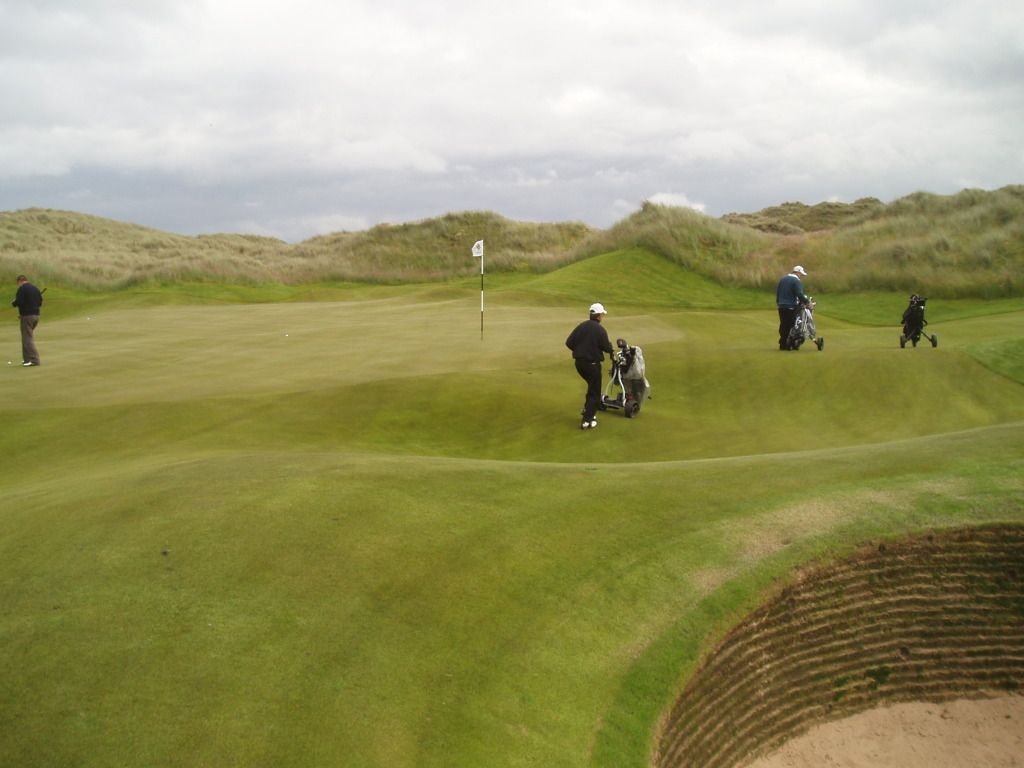
….aided by a naughty little swale which only becomes visible at the very last moment.
3. 147-205 yards par 3.
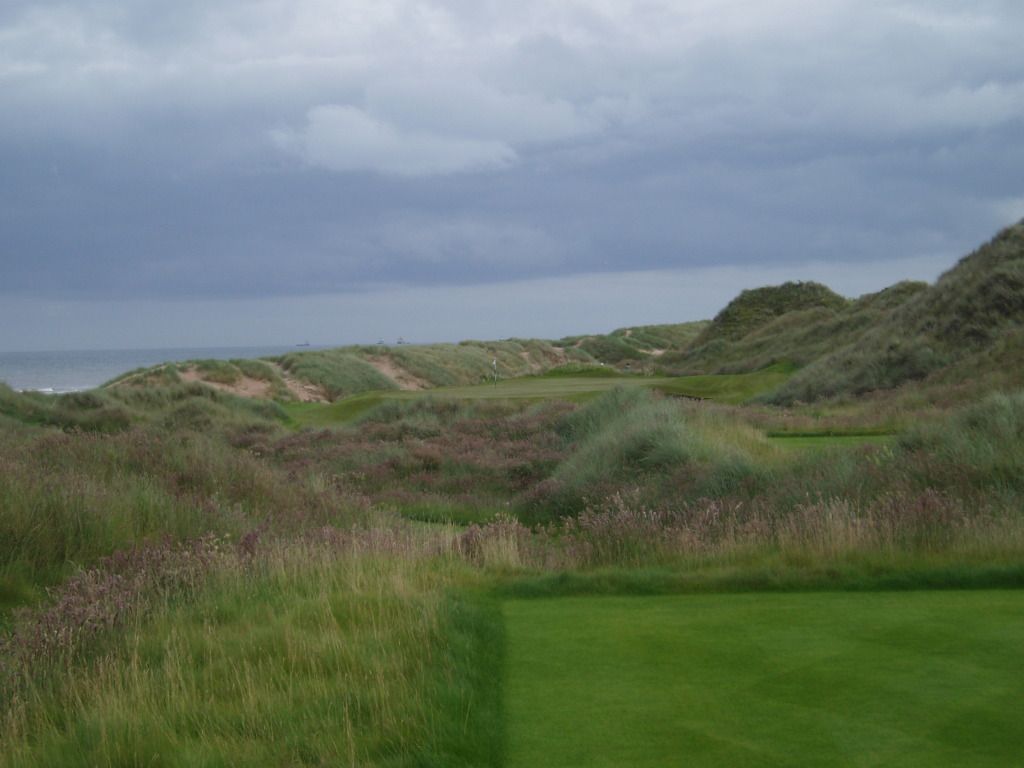
Little is revealed from the tee.
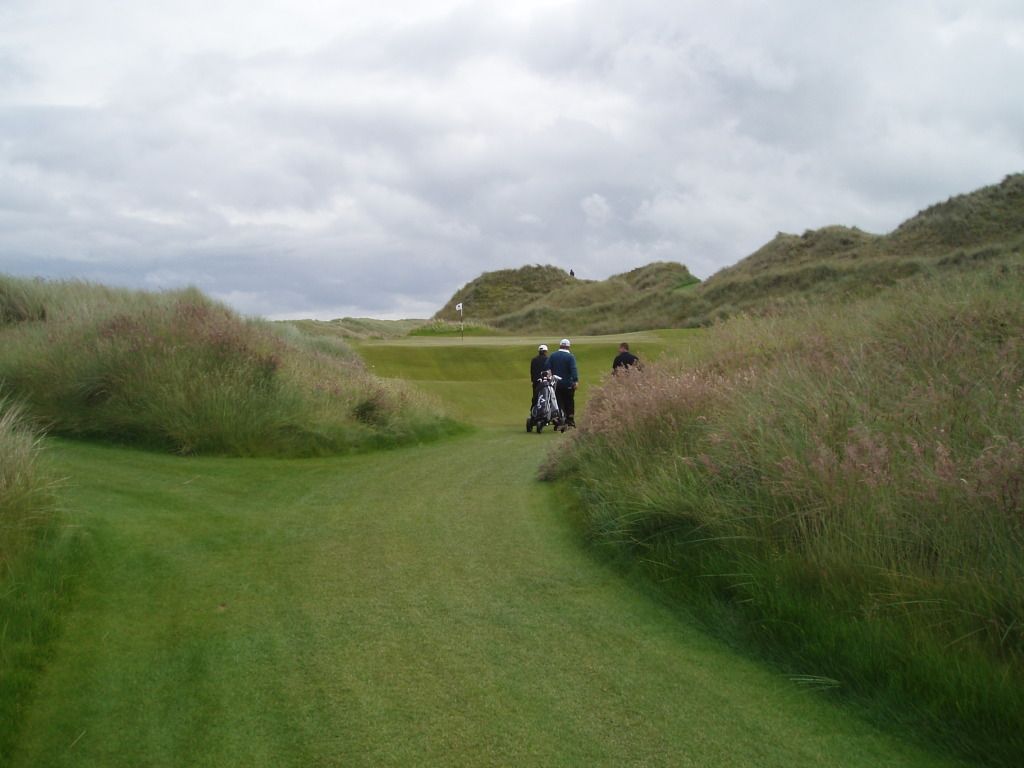
As we shall find so often, the green is raised.
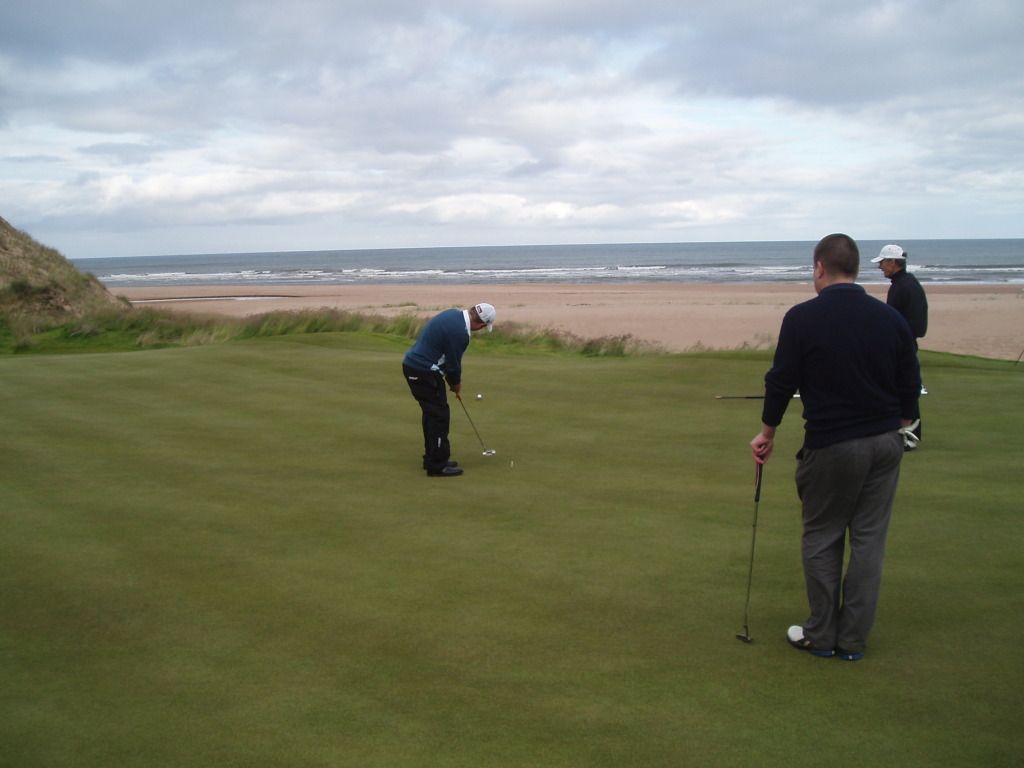
This is as close as we get to the sea.
4. 460-563 yards par 5.
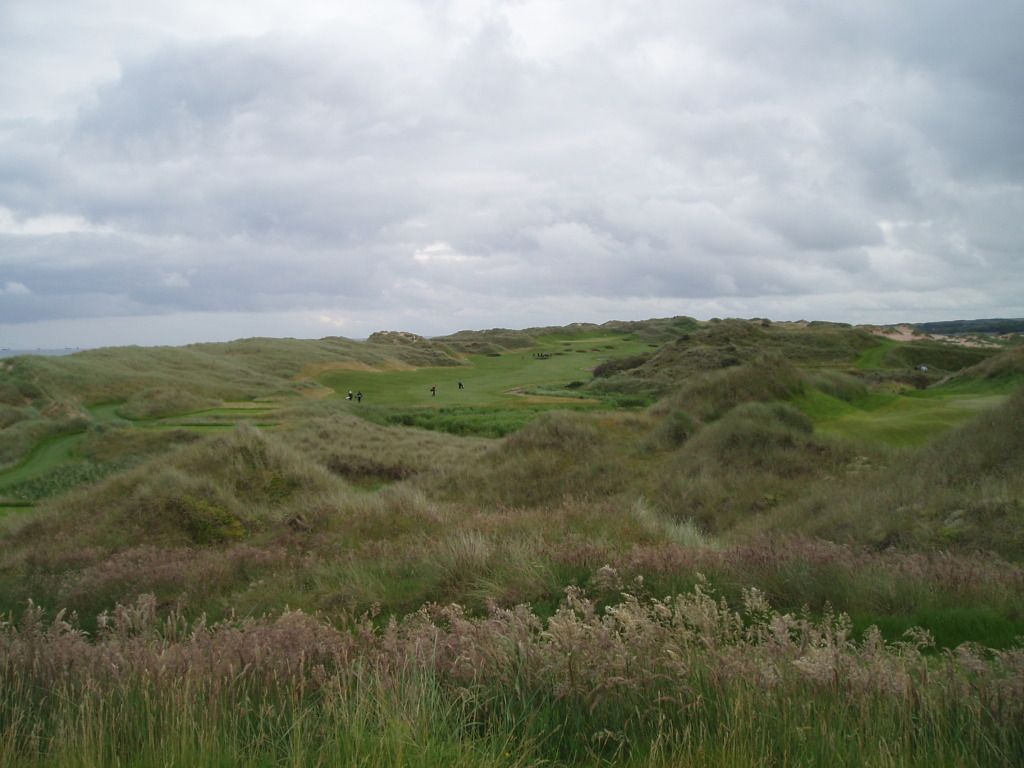
A decent carry is required to reach the fairway over this jungle. The Blairton Burn runs along the right side of the fairway almost all the way to the green.
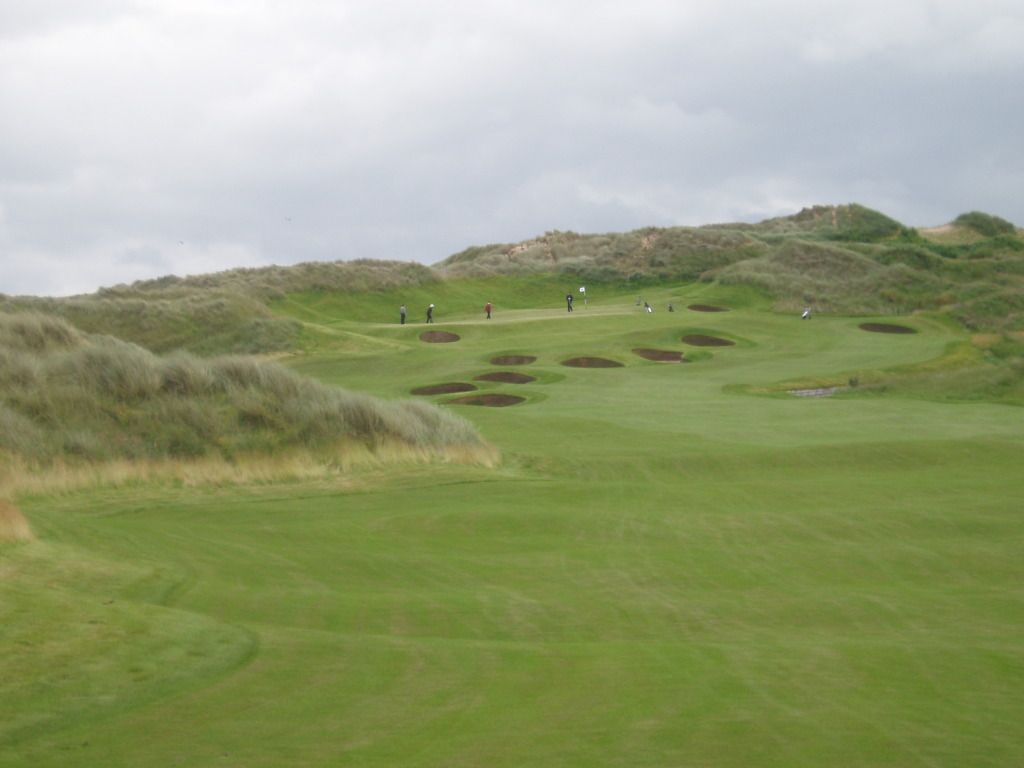
Approaching the green the fairway climbs through a minefield of bunkers.

This green has a typically complex putting surface with ridges and contours to confound all of us if the putt is lengthy.
5. 349-386 yards par 4.
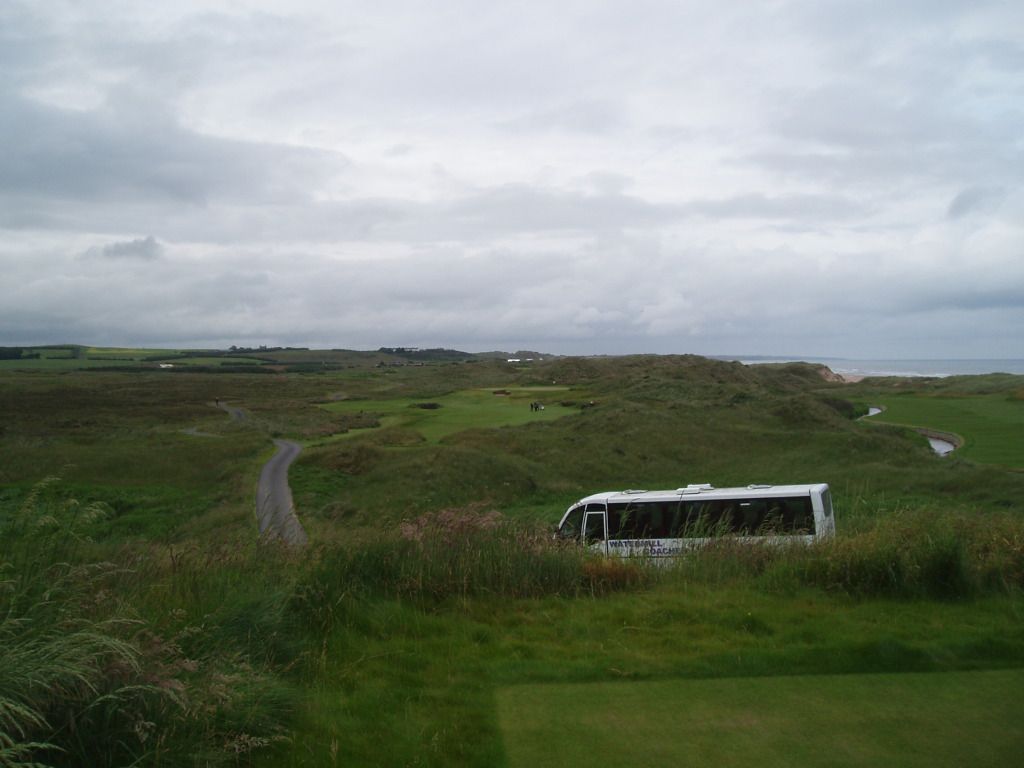
This fairway is generously wide but you need to direct your drive taking into account the pin position on this broad and sloping green.
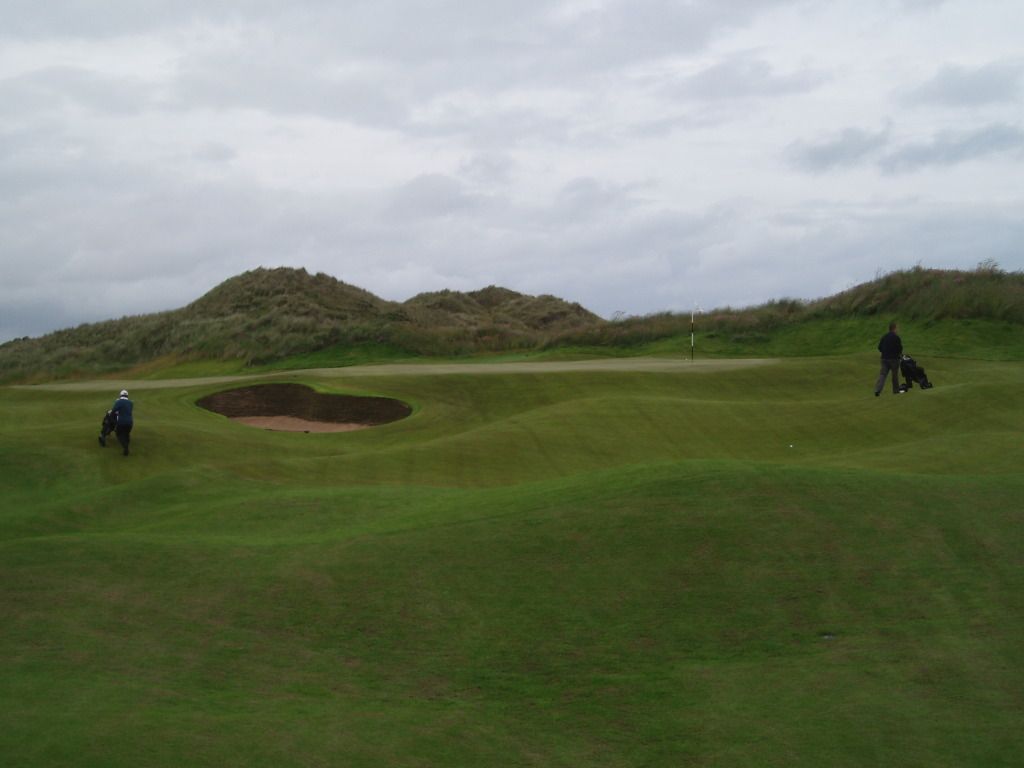
A running approach is unlikely to make it onto the putting surface through this undulating fairway.
6. 165-183 yards par 3.
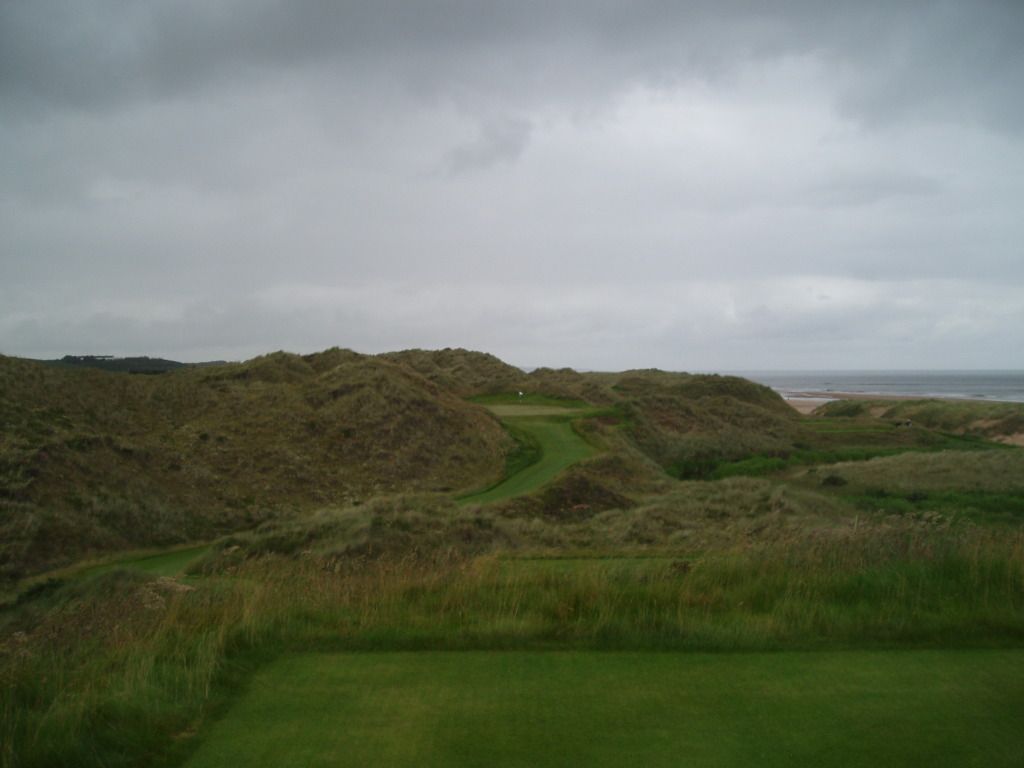
The shortest hole on the course does not present a generous target, protected on the left by that hillock and on the right by a steep drop into an abyss. Miss the green by the smallest of margins and almost certainly your ball is lost.
More to follow....